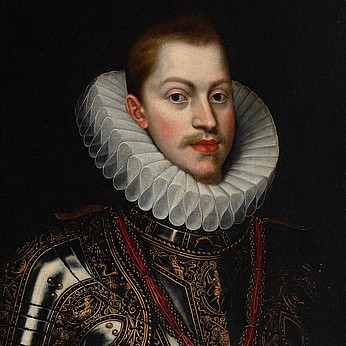Spanish or Italian school; 17th century. "Magdalena divesting herself of her riches". Oil on canvas. Relined.
Lot 62
About Seller
Setdart Auction House
Carrer Aragó 346
Barcelona
Spain
Setdart Subastas was born in 2004 and is currently the first online art auction in Spain with solidity, prestige and reliability guaranteed by our more than 60,000 users. Setdart has a young, dynamic and enterprising team ready to successfully manage the purchase and sale of art works through custom...Read more
Estimate:
EUR€6,000 - EUR€8,000
$6,451.61 - $8,602.15
Absentee vs Live bid
Two ways to bid:
- Leave a max absentee bid and the platform will bid on your behalf up to your maximum bid during the live auction.
- Bid live during the auction and your bids will be submitted real-time to the auctioneer.
Bid Increments
| Price | Bid Increment |
|---|---|
| EUR€0 | EUR€10 |
| EUR€200 | EUR€25 |
| EUR€500 | EUR€50 |
| EUR€1,000 | EUR€100 |
| EUR€3,000 | EUR€200 |
| EUR€5,000 | EUR€500 |
| EUR€10,000 | EUR€1,000 |
| EUR€20,000 | EUR€2,000 |
| EUR€50,000 | EUR€5,000 |
About Auction
By Setdart Auction House
Nov 24, 2021
Set Reminder
2021-11-24 09:00:00
2021-11-24 09:00:00
America/New_York
Bidsquare
Bidsquare : Old Masters, Day 1
https://www.bidsquare.com/auctions/setdart-auction-house/old-masters-day-1-7873
Setdart Auction House sofia@setdart.com
Setdart Auction House sofia@setdart.com
- Lot Description
Spanish or Italian school; 17th century. "Magdalena divesting herself of her riches". Oil on canvas. Relined. Presents repainting. Measurements: 91 x 73 cm. In the interior of a house of certain social position, as it is clear only by the detail of the background fabric, the girl's dress, and the fabric that is arranged on the table located in the right area, a young woman is situated, uncovering her bust and raising her gaze upwards adopting a hesitant attitude. The young woman with long, golden hair stands out for her golden mane that is arranged over her men. While she directs her hands to her chest in an attitude of clemency, she rests one of her elbows on the table, where different ornaments can be observed, as well as very rich jewels, all despised, placed disorderly on the table, but already stripped from her body. Thus showing a disinterest in the material in favor of the celestial, to which the young woman turns. The disdain for material things in order to choose the way of God was a common element in the lives of many saints such as St. Rosalia, St. Catherine of Alexandria, St. Elizabeth of Hungary and Mary Magdalene herself. Mary Magdalene is mentioned in the New Testament as a distinguished disciple of Christ. According to the Gospels, she housed and materially provided for Jesus and his disciples during their stay in Galilee, and was present at the Crucifixion. She was a witness of the Resurrection, as well as the one in charge of transmitting the news to the apostles. She is also identified with the woman who anointed Jesus' feet with perfumes before his arrival in Jerusalem, so her main iconographic attribute is a knob of essences. In solitary, Mary Magdalene is usually represented in a variable of the one presented here, doing penance in the desert, repentant of her past sins. The story of this saint serves as an example of Christ's forgiveness, and conveys the message of the possibility of redemption of the soul through repentance and faith.
- Shipping Info
-
In-house shipping available. Please inquire at admin@setdart.com.
-
- Buyer's Premium



 EUR
EUR CAD
CAD AUD
AUD GBP
GBP MXN
MXN HKD
HKD CNY
CNY MYR
MYR SEK
SEK SGD
SGD CHF
CHF THB
THB
















